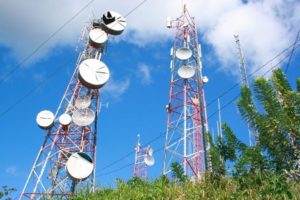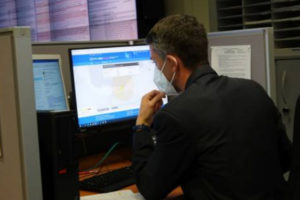
There are almost 5,500 active satellites in orbit as of spring 2022, and one estimate predicts the launch of an additional 58,000 by 2030. Large constellations of satellites in low Earth orbit are the primary drivers of the increase. Satellites provide important services, but there are potential environmental and other effects that this trend could produce (see figure).
Potential effects from the launch, operation, and disposal of satellites
For decades, satellites have been used for GPS, communications, and remote sensing. The number of satellites has recently increased, as thousands more have been launched to provide internet access.
But this increase may be disruptive. For example, it could lead to more space debris, which can damage existing satellites used for commerce or national security. We reviewed technologies and other tools to lessen potential effects. We also looked at mitigation challenges, like unclear rules and immature technology. To help address the challenges, we developed policy options, which may help policymakers achieve a variety of goals.
GAO assessed technologies and approaches to evaluate and mitigate the following potential effects:
- Increase in orbital debris. Debris in space can damage or destroy satellites, affecting commercial services, scientific observation, and national security. Better characterizing debris, increasing adherence to operational guidelines, and removing debris are among the possible mitigations, but achieving these is challenging.
- Emissions into the upper atmosphere. Rocket launches and satellite reentries produce particles and gases that can affect atmospheric temperatures and deplete the ozone layer. Limiting use of rocket engines that produce certain harmful emissions could mitigate the effects. However, the size and significance of these effects are poorly understood due to a lack of observational data, and it is not yet clear if mitigation is warranted.
- Disruption of astronomy. Satellites can reflect sunlight and transmit radio signals that obstruct observations of natural phenomena. Satellite operators and astronomers are beginning to explore ways of mitigating these effects with technologies to darken satellites, and with tools to help astronomers avoid or filter out light reflections or radio transmissions. However, the efficacy of these techniques remains in question, and astronomers need more data about the satellites to improve mitigations.
GAO developed the following policy options to help address challenges with evaluating and mitigating the effects of large constellations of satellites. GAO developed the options by reviewing literature and documents, conducting interviews, and convening a 2-day meeting with 15 experts from government, industry, and academia. These policy options are not recommendations. GAO presents them to help policymakers consider and choose options appropriate to the goals they hope to achieve. Policymakers may include legislative bodies, government agencies, standards-setting organizations, industry, and other groups.
Policymakers may be better positioned to take action on this complex issue if they consider interrelationships among these policy options. For example, implementing the fourth option (improving organization and leadership) may improve policymakers’ ability to implement the first and second options (building knowledge, developing technologies, and improving data sharing). Similarly, implementing the first option may help with the third option (establishing standards, regulations, and agreements). More generally, trade-offs between mitigations may emerge, the ongoing increase in new constellations may introduce unexpected changes, and a large and diverse set of interests from the global community may shift over time, all of which present persistent uncertainties. To address these complexities and uncertainties, the full report presents the policy options in a framework, which may help policymakers strategically choose options to both realize the benefits and mitigate the potential effects of large constellations of satellites.
Enabled by declines in the costs of satellites and rocket launches, commercial enterprises are deploying large constellations of satellites into low Earth orbit. Satellites provide important data and services, such as communications, internet access, Earth observation, and technologies like GPS that provide positioning, navigation, and timing. However, the launch, operation, and disposal of an increasing number of satellites could cause or increase several potential effects.
This report discusses (1) the potential environmental or other effects of large constellations of satellites; (2) the current or emerging technologies and approaches to evaluate or mitigate these effects, along with challenges to developing or implementing these technologies and approaches; and (3) policy options that might help address these challenges.
To conduct this technology assessment, GAO reviewed technical studies, agency documents, and other key reports; interviewed government officials, industry representatives, and researchers; and convened a 2-day meeting of 15 experts from government, industry, academia, and a federally funded research and development center. GAO is identifying policy options in this report.









